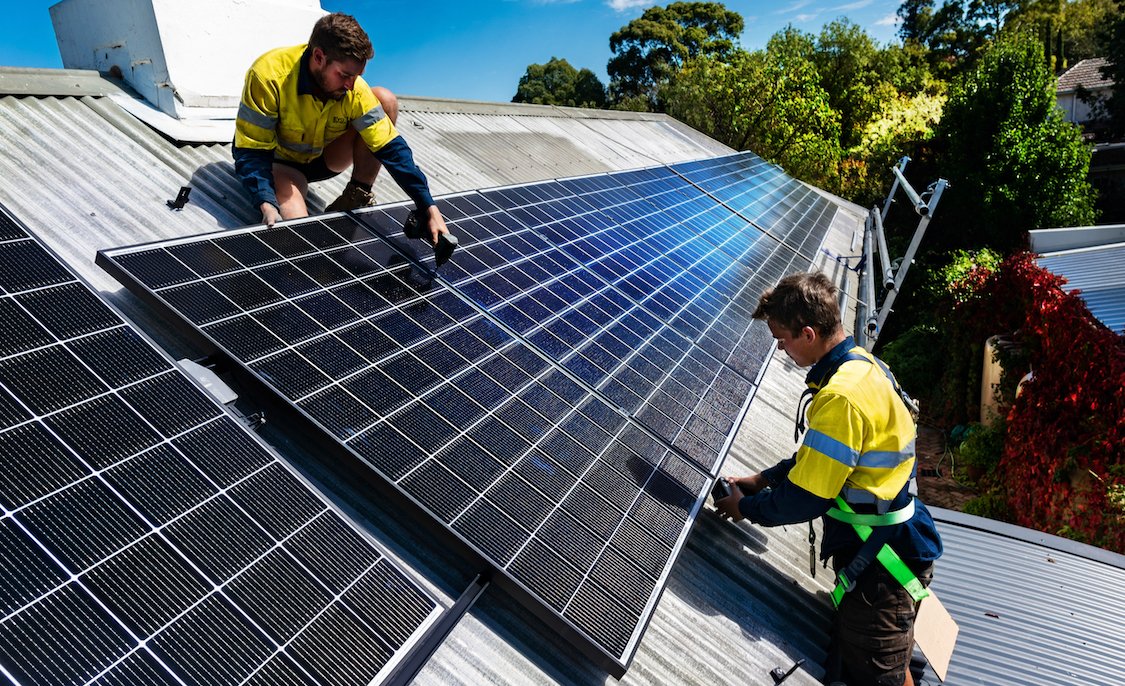Rooftop solar
Solar energy is energy created by the heat and light of the sun. In Australia, more and more homes and businesses are using solar systems to generate their own energy because it is an affordable and non-polluting form of electricity generation.

How does it help you save money and reduce emissions?
Solar Victoria says “Installing rooftop solar panels saves the average Victorian household $1,073 on their annual energy bills.” Solar systems in Melbourne recover their outlay in five to seven years. The savings come from avoiding paying for power from the grid and receiving a modest feed-in tariff for any excess power that is exported to the grid.
Rooftop solar produces clean energy and does not generate CO2 emissions. Excess energy that is fed back to the grid reduces the amount of energy required to be generated from coal and gas.
How do I get it?
Most suburban households install 5-10kW of solar (14-28 panels taking up 20-45sqm of roof space), providing a good balance between cost, average household consumption, and space. West or north-facing unshaded roof space provides the best outcomes, but installer quotes should outline other options and compromises. In some areas, electricity grid constraints might limit the size of the system you can connect, so make sure your installer advises in writing about this.
Solar Victoria has comprehensive information about solar systems, rebates for solar panels, solar hot water, batteries and how to find a reputable installer. Visit the Victorian Government’s Solar Rebate Program to see if you qualify for a rebate up to $1,400 or an interest-free loan.
Solar Quotes will arrange three quotes from local quality installers. Solar Choice and Solar Savers provide similar capabilities. We suggest you only contact one of these options to restrict excessive solar supplier follow-ups.
Tips for finding a good installer and suitable system:
Talk to friends and neighbours about their experiences and recommendations.
Avoid deals from unsolicited phone sales or brochures in the mailbox, and do your research to ensure you get a quality system that’s right for you.
Ensure quotes include details on the components proposed, layout, inverter location, inclusions/exclusions, expected energy output (kW) and installation constraints.
